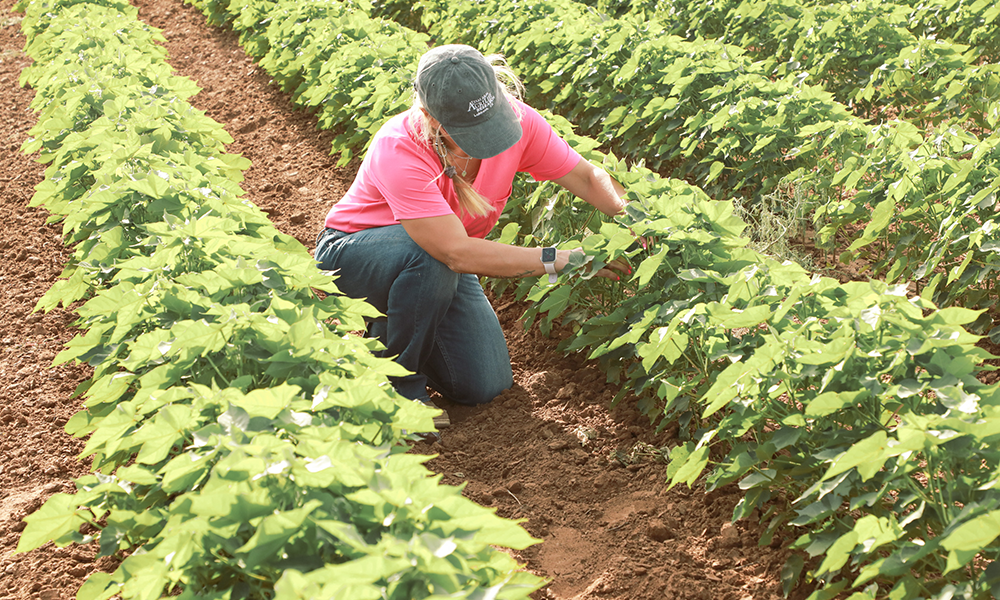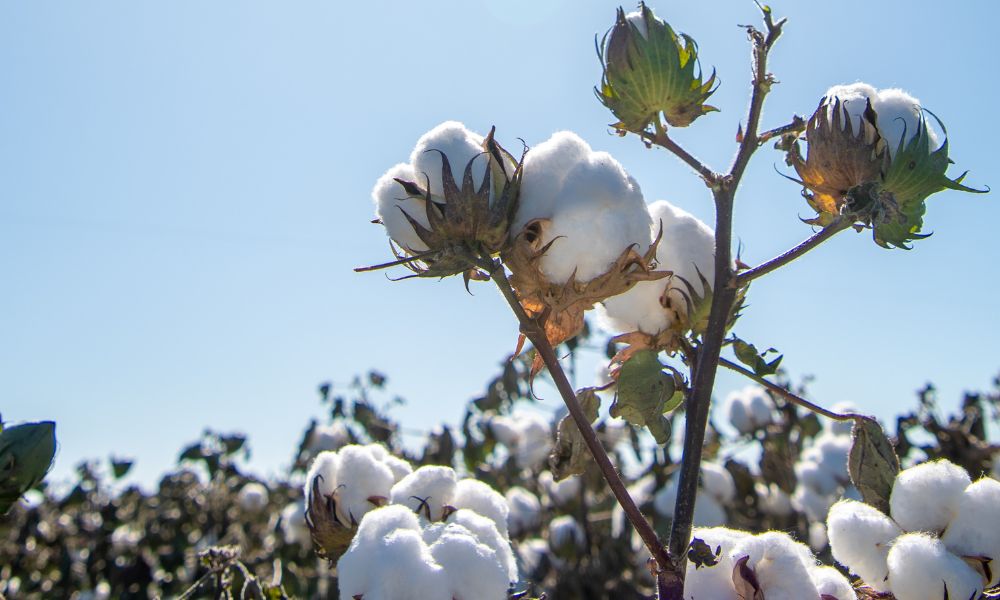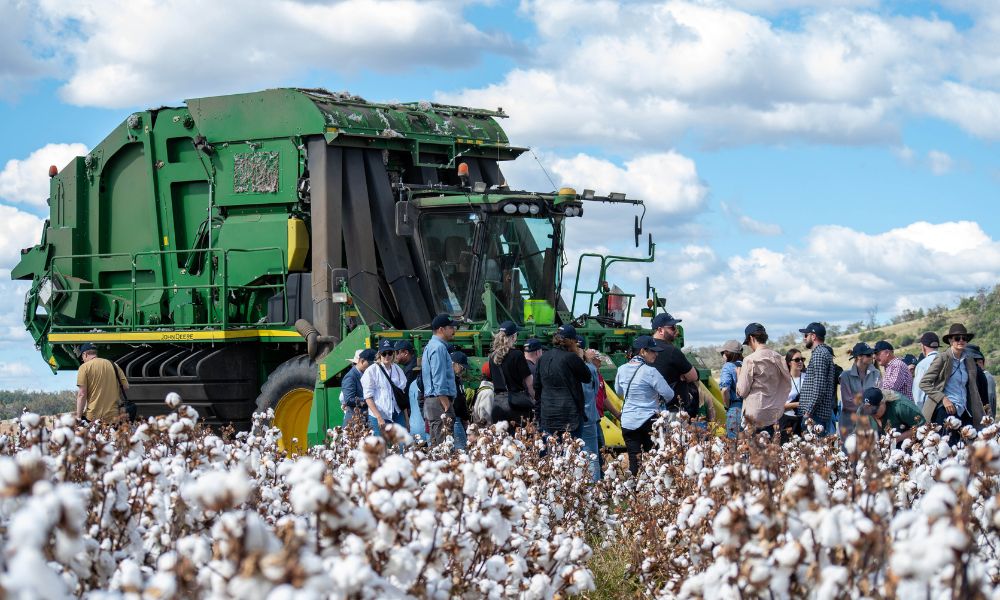Cotton & Water: Understanding Metrics & Use in Industry Tools
June 25, 2020
Learn about life cycle assessment metrics and industry tools like the higg index in the second part of this series.
In the last century, worldwide use of water has grown at more than twice the rate of human population growth and this disparity has led scientists, economists, and farmers to ask questions like, “How do we interact with water?”, “What does the lifecycle look like?”, and, “How can we create resiliency?” In order to answer these questions, methodologies needed to be developed and metrics needed to be standardized.
The three primary focus areas and methodologies for scientists working to understand and combat water scarcity include assessing our interactions with water, measuring the impacts of our interactions and understanding global water scarcity.
1. Interactions with Water
The two primary ways humans interact with the water cycle are referred to as ‘water use/water withdraw’ and ‘water consumption.’
- Water Use/Water Withdraw. This interaction describes water that has been withdrawn from a watershed for a process or product that is ultimately returned to the same watershed. For example, when a power plant uses water for cooling, the power plant towers pull water in from the on-site lake. After the water has cooled the tower, it is then returned to the same lake.
- Water Consumption. . This interaction describes the process of removing water from a watershed with no plans of returning it. The water is withdrawn from a water basin through evaporation, embedded in a product or removed through other means, instead of being returned (like with the water use/withdraw interaction). In the same power plant example above, some of the water used for cooling evaporates. Because the evaporated water is not returned to the same watershed it was pulled from, the process is referred to as ‘consumption.’
Learn more about our interactions with water by watching the webinar.
2. Measuring the impacts of our interactions
In order to understand human impacts, we have to ask the questions, “When and how do we interact with water, and what do those interactions mean to the environment?” The two dominant methods for measuring these impacts are Water Footprint (WFP) and Available Water Remaining (AWARE).
- WFP. This method for measurement focuses on consumption and breaks consumption down into three water footprints — blue, green and grey water.
- Green water is the volume of rainwater evaporated or incorporated into a product.
- Blue water is the volume of surface or groundwater evaporated or incorporated into a product.
- Grey water is the volume of water needed to assimilate pollution, or dilute waste to the point of being safe to return again to the environment.
- AWARE.This methodology was developed by a multi-stakeholder group of leading scientists to develop a consensus about water life-cycle assessment. It was ultimately formed after the ISO14046 Water Guidance standards which determined these life-cycle midpoint indicators AWARE is based on the commonsense idea of asking the right question. In this case, the right question is, “What is the potential of depriving another user of water (human or ecosystems) when consuming water in a single area?” The AWARE methodology focuses on not just volume, but impact, because there is a direct relationship between one user having water and another lacking it. For example, irrigation may affect the availability of water for animals in the same ecosystem.
Learn more about impact measurements by watching the webinar.
3. Global Water Scarcity
Location matters. The water footprint network maps out the ability for humans and other ecosystems to attain water throughout the world and illustrates different kinds of scarcity.
- Physical Water Scarcity.This kind of water scarcity is most common in America’s southwest where there isn’t physically much water available.
- Economic Water Scarcity. Although water may actually be available in areas suffering from economic water scarcity, economic conditions make it challenging to attain that water in the right form, at the right time, to enable ecosystems to thrive.
Learn more about global water scarcity by watching the webinar.
As a result of the above methodologies, we now understand the interactions with water and impact of water use. That knowledge combined with the use of industry tools like the Higg Materials Sustainability Index (MSI) enables us to make decisions that protect our water supply.
The Higg Index considers global warming, eutrophication, water scarcity, abiotic depletion and chemistry to understand the relationship between cotton and water use while recognizing the importance of also considering the impacts of climate change, fossil fuel use and water quality on our environment.
For those farmers and brands that have implemented science-based targets to reduce the environmental impacts of doing business, you may find that the Higg Index (like most tools), is effective yet limited — one of many you may use to help you reach those targets. The results from this tool’s scoring method are often subjective, and assume all the categories listed above to be equally weighted. The same may not be true when it comes to your science-based targets and personal/corporate values. For many, focusing on the midpoint indicators rather than the MSI score is a more effective way to review the data and incorporate into an impactful sustainability strategy.
Learn more the Higg Index and about the water use metrics outlined above, by watching the webinar below.
The Webinar
This CottonWorks™ webinar is led by Dr. Jesse Daystar, Cotton Incorporated’s Chief Sustainability Officer. Cotton & Water: Understanding Metrics & Use in Industry Tools highlights the three primary focus areas and methodologies for scientists working to understand and combat water scarcity.
The work we do is possible because of collaborations with researchers like these and partnerships with people all throughout the value chain. Ready to commit to sustainably produced cotton? Become a Cotton LEADS partner today. Interested in doing even more? Contact us for ideas to get the most out of sustainable cotton and your partnership with Cotton LEADS.















Recent Comments